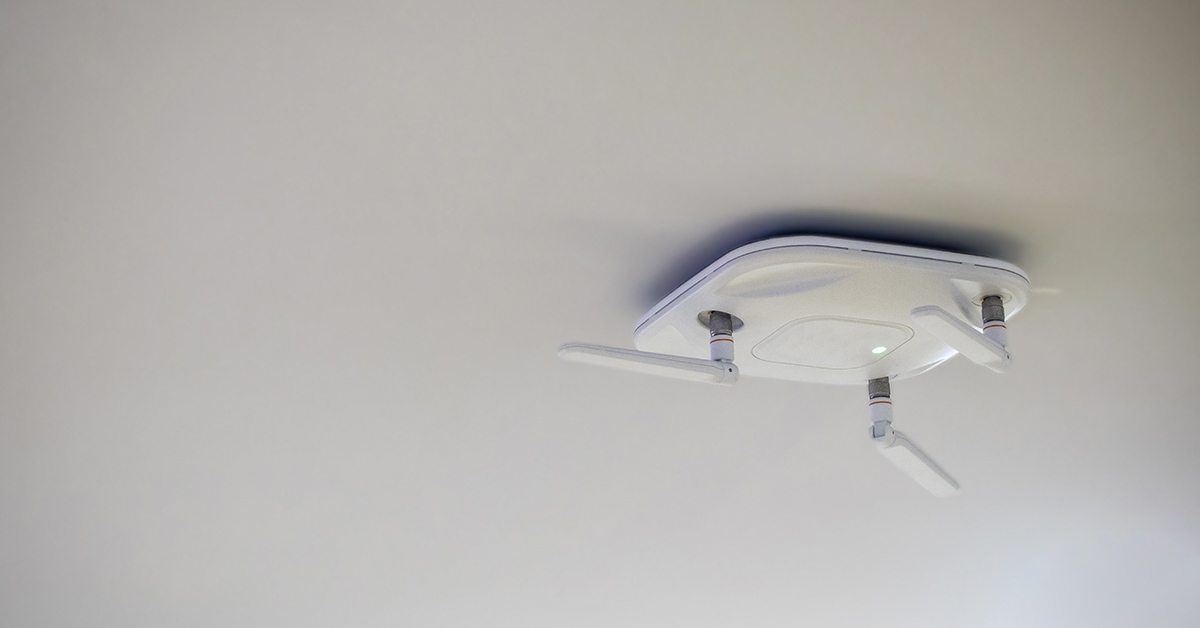Researchers at Carnegie Mellon University found a way to use WiFi routers to detect people’s shapes and movements through walls. To develop this, they utilized DensePost, a system that maps the pixels of a person in a photo. Then they created a deep neural network that maps the WiFi signals sent and received by routers, sketching the images of people, making them ‘visible through walls.’
Using WiFi as Security Cameras
For years, scientists have tried to find an alternative to “see” people without cameras. In 2013, researchers at MIT used cell phone signals to “look” through walls, and in 2018, another MIT team used WiFi to pick up movement in another room and map their motions as walking stick figures. [1]
Meanwhile, the Carnegie Mellon researchers stated that they believe they could use WiFi signals as a “ubiquitous substitute” for normal RGB cameras in terms of “sensing” people in a room. “We developed a deep neural network that maps the phase and amplitude of Wi-Fi signals to UV coordinates within 24 human regions. The results of the study reveal that our model can estimate the dense pose of multiple subjects, with comparable visual performance to image-based approaches, by utilizing Wi-Fi signals as the only input.”’ [2]
Read: The Man With a Microchip That Allows Him to Buy Things with, His Body.
In other words, the technology sends a low-powered WiFi signal through a room, which detects everything there. It ignores static objects and reverberates around moving objects to create images of them on the monitor outside. The signal could go through wooden fences, drywall, even concrete walls, although the range and accuracy can vary depending on the wall type.
Moreover, WiFi would not be deterred by poor lighting or obstructions like a regular camera would. According to the study, “Advances in computer vision and machine learning techniques have led to significant development in 2D and 3D human pose estimation from RGB cameras, LiDAR, and radars. However, human pose estimation from images is adversely affected by occlusion and lighting, which are common in many scenarios of interest.”
Privacy Concerns
WiFi used as a people-detector has many potentials for good and for bad when it comes to privacy. But the researchers believe this could advance privacy rights. “In addition, they protect individuals’ privacy and the required equipment can be bought at a reasonable price,” they wrote. “In fact, most households in developed countries already have WiFi at home, and this technology may be scaled to monitor the well-being of elder people or just identify suspicious behaviors at home.”
But in the meantime, this kind of technology can make human tracking easier and more widely available. Although they can work as superior home security cameras, they open up the possibility of being used for shady purposes.
Read: School Uses Facial Recognition Technology to Make Students Pay Attention
The Wi-Peep Drone
Meanwhile, researchers at the University of Waterloo have developed similar technology. Wi-Peep is a drone-powered device that can “see” through walls using WiFi networks. It can fly close to a building and use the network inside to find any WiFi-enabled devices in the area. This can work even when the network is password-protected because of a loophole the researchers called polite WiFi. Password-protected or not, smart devices will respond to contact attempts from other devices. So the Wi-Peep sends messages to the device and measures the response time to identify its location within a meter’s range. [3]
“The Wi-Peep devices are like lights in the visible spectrum, and the walls are like glass,” said Dr. Ali Abedi, an adjunct professor of computer science at Waterloo. “Using similar technology, one could track the movements of security guards inside a bank by following the location of their phones or smartwatches. Likewise, a thief could identify the location and type of smart devices in a home, including security cameras, laptops, and smart TVs, to find a good candidate for a break-in. In addition, the device’s operation via drone means that it can be used quickly and remotely without much chance of the user being detected.” [4]
Fixing “Polite WiFi”
Despite the technological advancements shown in Wi-Peep, it’s actually accessible for people with the right expertise. The researchers built it using a regular store-bought-drone and $20 worth of hardware. There are many good potential uses for this type of device, like firefighters finding people in burning buildings. However, like the technology presented by the Carnegie Mellon researchers, it has the potential to be used for many sinister and privacy-invading reasons.
“On a fundamental level, we need to fix the Polite WiFi loophole so that our devices do not respond to strangers,” Abedi said. “We hope our work will inform the design of next-generation protocols.” He recommends WiFi chip manufacturers make devices have randomized response times to spoil the accuracy of Wi-Peep and similar technologies.
Keep Reading: As Orwell’s 1984 Turns 74 It Predicted Much Of Today’s Surveillance Society
Sources
- “Scientists Are Getting Eerily Good at Using WiFi to ‘See’ People Through Walls in Detail.” Vice. Samantha Cole. January 17, 2023
- “Dense Human Pose Estimation From WiFi.” Carnegie Mellon University. Jiaqi Geng. August 2022
- “A breakthrough system can see through walls by using Wi-Fi routers.” Interesting Engineering. Thomas Velasquez. January 19, 2023
- “Researchers discover security loophole allowing attackers to use WiFi to see through walls.” Science Daily. University of Waterloo. November 3, 2022.

